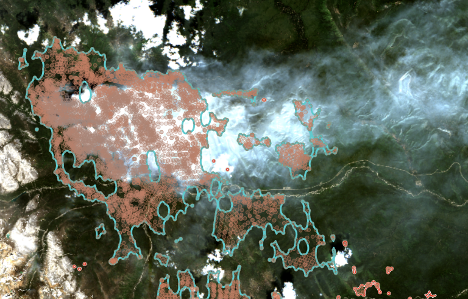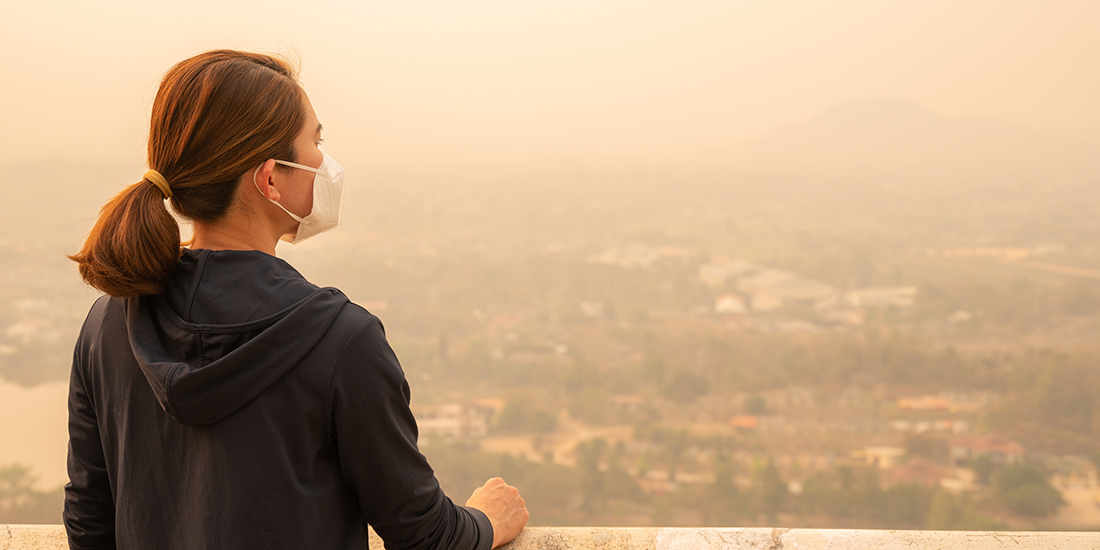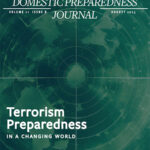In June 2023, smoke from Canadian wildfires engulfed New York City, contributing to the worst air quality ever recorded. Air Quality Index (AQI) levels reached 484 units that day, setting a global record for poor air quality. An AQI of 484 is classified as hazardous and is extremely dangerous. It is one of the highest levels possible on the scale, which typically ranges from 0 to 500 units. Unfortunately, the same scenario unfolded again in June 2025, as satellite data confirmed smoke was drifting into U.S. skies from Canadian fires. Any smog outside could be from wildfires thousands of miles away.

Wildfires are not just a forestry or climate story. They have become a growing public health problem, and the effects are becoming more noticeable. The danger not only comes from the flames themselves but also from smoke and a hazardous blend of tiny particles and toxic compounds that can travel hundreds or even a thousand miles away. This means that people far from a fire’s origin could be at risk, as seen in 2023, and most likely will happen again.
Particle Pollution Danger
The primary health concern associated with wildfire smoke is fine particulate matter (PM), specifically PM2.5. This microscopic debris measures 2.5 microns in diameter and is composed of burnt organic materials like trees, grass, and other materials that a fire burns. For reference, that size is roughly 30 times smaller than the breadth of a human hair. These particles are small enough to reach into the lungs and potentially enter the bloodstream. Imagine directly ingesting soot into the human body—even short-term exposure can trigger acute symptoms, while long-term exposure raises the risk of chronic illness. Exposure to these particles is directly linked to
- Respiratory issues, including asthma attacks and bronchitis;
- Heart problems;
- Health effects, from reduced lung function to disrupted pregnancy outcomes; and
- Damage to previously healthy individuals, especially with repeated or prolonged exposure.
Uncontrolled wildfires often produce significantly more pollution and PM2.5 than prescribed burns. They also tend to burn more than forests. Homes, vehicles, and other synthetic materials contribute toxic byproducts to the smoke, increasing the health risk.
Public Health Preparedness
Because of these issues, hospitals experience surges in emergency room visits during wildfire smoke events, straining already burdened healthcare systems. Preparedness is not just needed for wildfire first responders but also for public health systems as they adapt to effects from respiratory issues and other vulnerable populations.
One of the greatest challenges surrounding wildfire smoke is the lack of awareness of its health impacts and who is most vulnerable. Many people think smoke is just a temporary nuisance, but it can pose a permanent health threat, especially for those most at risk. Children and elderly people are especially vulnerable due to their developing or weakened immune and respiratory systems. Individuals with preexisting health conditions, such as heart disease, diabetes, asthma, or chronic obstructive pulmonary disease (COPD), may see their symptoms worsen when smoke levels rise.
Improving the public health response to wildfire smoke begins with early warning and fire planning.
- Timely alerts about nearby wildfires or approaching smoke allow individuals and families time to seek cleaner air, whether by relocating temporarily, using filtration systems, or accessing designated public shelters.
- Establishing predefined evacuation sites or “clean air centers” can provide critical refuge, especially for those without access to home filtration or the means to leave entirely.
- Public education is equally essential: people need clear, accessible guidance on how to protect themselves during smoke events, including how to properly filter indoor air, when to stay inside, where to find safer air quality, and when to wear protective masks if evacuation is not possible.
- Prescribed fire, when planned and implemented under controlled conditions, can be a tool for risk reduction. With proper planning and implementation, the smoke from these burns is generally far less severe than that of uncontrolled wildfire events.
Increasing awareness of the dangers of smoke and equipping communities with practical tools and knowledge can dramatically reduce exposure risks and improve long-term resilience.

Living With Wildfires
Forest fires and human health are deeply intertwined, even for communities far from the flames. Wildfire smoke can travel hundreds or even thousands of miles on high-altitude air currents, affecting air quality and public health in regions never threatened by the fire itself. As these events become more frequent and severe, it is critical to shift perspectives from reacting to immediate fire danger to preparing for the widespread and lingering public health impacts of smoke. Proactive measures include early warning systems for firefighters and the public. Continued public education and coordinated preparedness among emergency responders and healthcare providers are essential. Protecting people from wildfire smoke is no longer optional but a necessary extension of environmental resilience and public health strategy. Rather than wait for the fire to reach the doorstep, it is imperative to prepare for the smoke that has already arrived.

Robert LaMacchia
Robert LaMacchia leads business development for OroraTech USA Inc., driving the expansion of wildfire intelligence and climate resilience solutions across the United States. With 15 years of experience in the space industry, technology, and strategic business development, he has a strong track record of advancing innovative solutions in high-impact environments. His work connects operational deployment with strategic partnerships, accelerating the adoption of Earth observation technologies to reduce wildfire risk and strengthen climate resilience.
- Robert LaMacchiahttps://domesticpreparedness.com/author/robert-lamacchia
- Robert LaMacchiahttps://domesticpreparedness.com/author/robert-lamacchia





